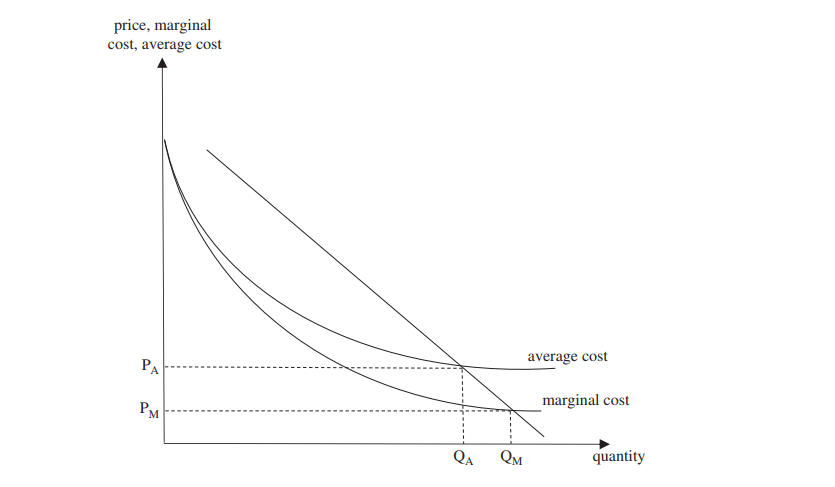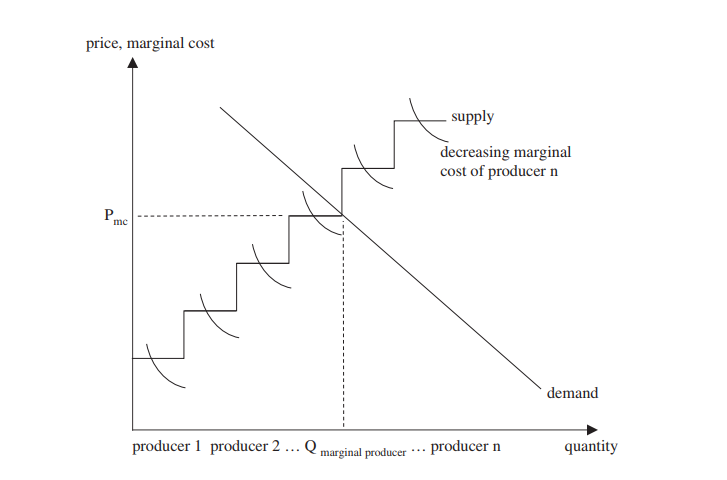In their recently published paper, ‘What Shall we do with the Drunken Sailor? Product Safety in the Aftermath of 3D Printing,’ Klaus Heine and Shu Li discuss how a disruptive technology like 3D printing can also upset other more peripheral areas such as legal issues and product liability. Safety mechanisms must be in place to protect the public, and the authors question why there is not more concern over potentially ‘harmful 3D printed products,’ with an analysis of why ‘incumbent product liability law does not incentivize optimal deterrence.’
Focusing on the many novel 3D printing startups and business models associated with 3D printing as the ‘trigger,’ the authors point out how little informational content regarding ‘specific producers’ is provided.

Under perfect competition as well as in case of natural monopoly a linear value chain is established. Bulk orders received from downstream distributors and retailers make it profitable to reap the benefits from economies of scale.
Value chains have changed significantly today though too, especially with the emergence of technology like 3D printing and artificial intelligence—offering innovations that may also disrupt the legal world, forcing change; in fact, the authors see 3D printing as creating risk and possible harm.
“The case of 3D printing is iconic for a better understanding of how far new technologies disrupt our traditional understanding of applying liability law,” state the researchers.
They also outline the clear problems at hand as the previous delineation between consumer and seller is becoming more of a gray area, with the ‘prosumer’ beginning to take hold.
“This makes it far more complicated to target the manufacturer of a defective product, which makes the incumbent tort law ultimately a blunt sword to reach optimal safety,” state the researchers. “For example, a hobbyist software programmer may engage in co-drafting an opensource CAD file for 3D printing and share the code on a platform. Afterwards the hobbyist programmer uses the CAD file for 3D printing by herself, and others use the CAD file for commercial purposes. If the CAD file has a bug that leads to accidents, is it then the hobbyist programmer who can be held liable?”
With so many consumers in the mix, the legal issues could be challenging as law enforcement issues emerge due to 3D design and 3D printing often being independent of each other, and without the necessity for a substantial—or even formal—site. Safety becomes an issue too as 3D printed goods are not controlled traditionally, or at all. Businesses, or intermediate retailers, may not even be insured. There may not be any shipping involved as files can be transferred electronically in many cases—cutting out the need for shipping areas or harbors, where products are often inspected.
Other major issues arise though regarding liability regimes in relation to fair compensation and optimal deterrence—making it difficult to assign liability due to lack of disclosure of safety information, and scarcity of information, interrupting the normal scope of liability law. 3D printing also leaves little trace for tracking the source of a defect:
“In other words, 3D printing produces only light or no footprints at all, which makes it demanding to identify a culprit in case of harm, damage or wrongdoing. The technical conditions under which 3D printing takes place translate economically into an extreme form of perfect competition in which it is not possible to distinguish between the atomistic suppliers, because all firms produce at the same marginal cost level,” state the researchers. “In addition, it is not always possible to separate consumers from producers. The market participants can take over both roles simultaneously or switch between them easily.”
Open-sourced products, of course, are a concern for safety, along with the fact that there are no R&D centers to look back on in many cases if there is a product defect—and no matter what, it could be easy to deny any origin of harm.
“The main reason for the misfit between incumbent liability law and 3D printing is the lack of economies of scale which leads to a high degree of technological homogeneity between the products as well as the producers of 3D printed products, in combination with possibly small and scattered producers. The consequence is a lack of information for separating horizontally and vertically between tortfeasors along the value chain,” conclude the authors.
“… a liability regime for 3D printing must strive for sufficient regulatory openness on the one hand and legitimate control on the other hand. This goal might be better achieved by the formulation of relatively open regulatory standards than highly specific rules.”
3D design and 3D printing offer the potential for countless innovations, but concerns do accompany the magic of this new technology, from worrying about legal concerns in additive manufacturing to health issues like emissions and toxicity.
What do you think of this news? Let us know your thoughts! Join the discussion of this and other 3D printing topics at 3DPrintBoard.com.
[Source / Images: What Shall we do with the Drunken Sailor? Product Safety in the Aftermath of 3D Printing]Subscribe to Our Email Newsletter
Stay up-to-date on all the latest news from the 3D printing industry and receive information and offers from third party vendors.
You May Also Like
Precision at the Microscale: UK Researchers Advance Medical Devices with BMF’s 3D Printing Tech
University of Nottingham researchers are using Boston Micro Fabrication‘s (BMF) 3D printing technology to develop medical devices that improve compatibility with human tissue. Funded by a UK grant, this project...
3D Printing Webinar and Event Roundup: April 21, 2024
It’s another busy week of webinars and events, starting with Hannover Messe in Germany and continuing with Metalcasting Congress, Chinaplas, TechBlick’s Innovation Festival, and more. Stratasys continues its advanced training...
3D Printing Webinar and Event Roundup: March 17, 2024
It’s another busy week of webinars and events, including SALMED 2024 and AM Forum in Berlin. Stratasys continues its in-person training and is offering two webinars, ASTM is holding a...
3D Printed Micro Antenna is 15% Smaller and 6X Lighter
Horizon Microtechnologies has achieved success in creating a high-frequency D-Band horn antenna through micro 3D printing. However, this achievement did not rely solely on 3D printing; it involved a combination...






























